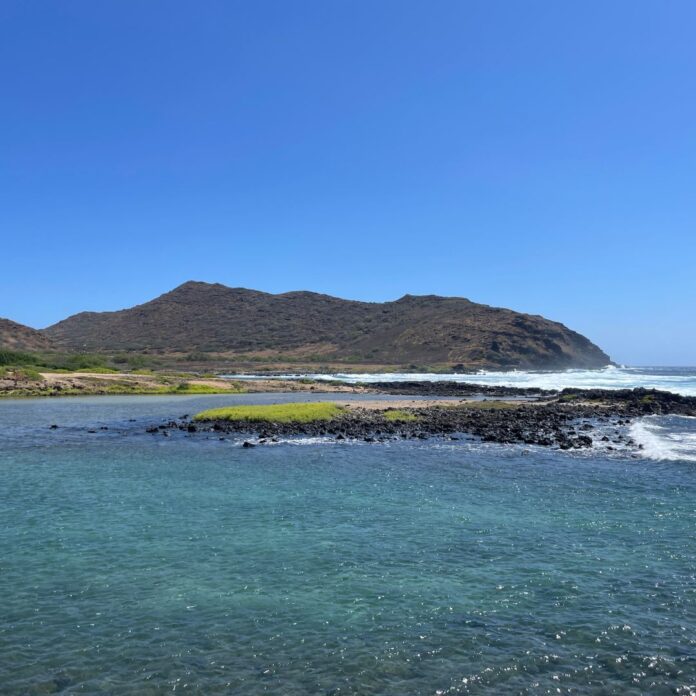This is the second 808 Cleanups-related event that I have participated in and I can confirm that they are well run and always make things interesting for their volunteers. If you want to read about the other event that I did or look at more places to volunteer, check out my article on The Best Places To Volunteer On Oahu.
Kaloko Inlet Restoration Information
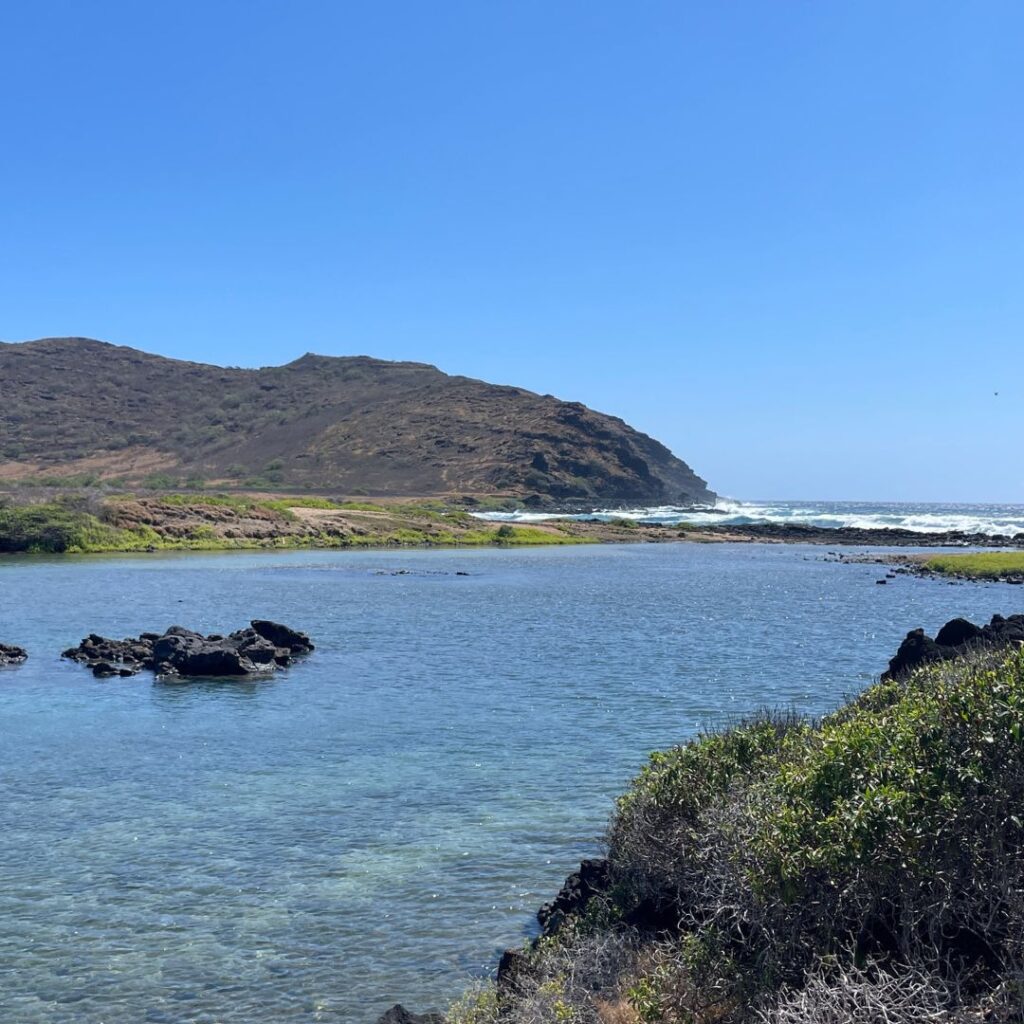
As a volunteer at the 808 Cleanups event, I was lucky enough to help with the Kaloko Inlet Restoration on the Ka’iwi Coastline. Our goal was simple yet important: to remove invasive plants and grasses and replace them with native ones. 808 Cleanups is a group that works to keep our land free of litter, and they fight against invasive plants and grasses that don’t belong in Hawaii’s environment.
The event took place in a pretty unique location. The Kaloko Inlet, part of the Ka’iwi Coastline, is a place full of natural beauty. It was exciting to see people of different ages and abilities come together ready to work and help the environment. Depending on our abilities and interests, we got to choose from a variety of tools like pickaxes, stump removers, Sawzalls, and smaller pickaxes.
Some of us cut down and removed plants that didn’t belong there. Others moved cut plants to different parts of the site, watered the native plants, or picked up litter along the coastline and trails.
If you’re looking to do this event, be careful of thorny trees, rocks, and other dangers; make sure to bring strong shoes, water, and sun protection. One downside was that no restrooms were at the site; however, 808 Cleanups provided all the tools, supplies, and water we needed throughout the day.
How To Reserve A Volunteer Slot
Unlike other volunteering opportunities that a specific group runs, the Kaloko Inlet Resortation is run through 808 Cleanups which offers a plethora of volunteering work days. If you want to sign up, then you need to visit their calendar with every single upcoming event and the details about each one.
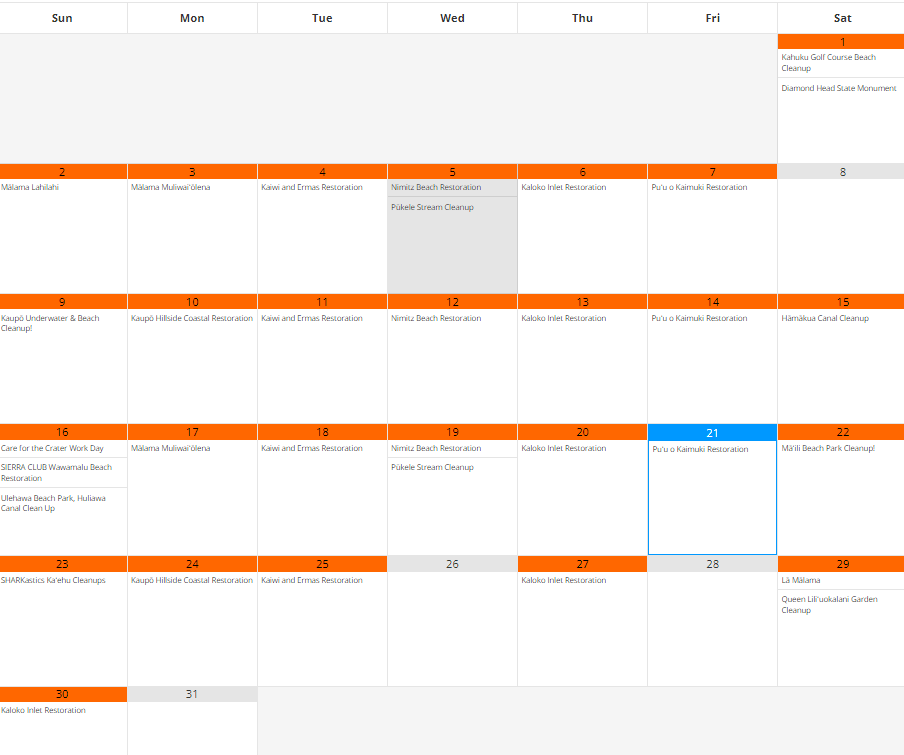
After you’ve found an event that works for you, simply click on the name and a drop-down menu will appear detailing everything you need to know about the event and what you may need to bring.
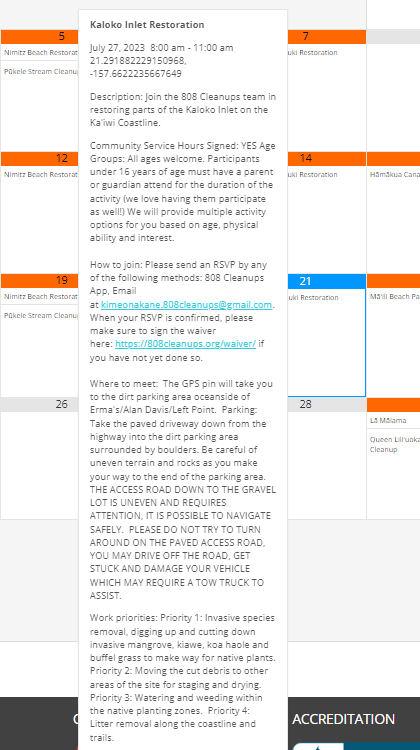
To RSVP for the event you can use the 808 Cleanups Mobile App or email whoever is running the event, their email will be listed at the bottom of the event details. If you’re approved, you will get an email from the director of the event confirming the RSVP.
It is important to note that you must also fill out a safety waiver before attending any event, the waiver can be found here. Once you have completed the waiver, you do not need to fill it out for future events.
How To Get To The Volunteer Site
Meet at the parking lot near Kaloko Beach in Hawaii Kai. If you look at the 808 Cleanups website, they will direct you to Sandy Beach which is a bit down the road from where you’re supposed to be. Refer to the map below to find Kaloko Beach
This parking lot is pretty rough and has rocks all over the ground, make sure to take your time when driving and be aware of any high-rising rocks that could scrape your car.

After you find a parking spot, you can explore the tide pools below and the beautiful sandy beach. 808 Cleanups crew members will arrive just before the scheduled time to make sure everyone is there and ready to go, you will then walk to the work site.
What Can You Expect
Just like other 808 Cleanups events, we began our work day with an Oli to ask for entrance into this place and permission to work. Those who knew the Oli were welcome to chime in but if you didn’t know the words, you were encouraged to be still and listen.
Similar to the Kaupō Hillside project, this workday is pretty intense and requires a lot of physical labor. There is a lot of bushy grass that covers the majority of the Kaloko Inlet area and we spent a lot of time clearing that out to make way for native plants.
Here is what it looked like before we cleared out the grass.
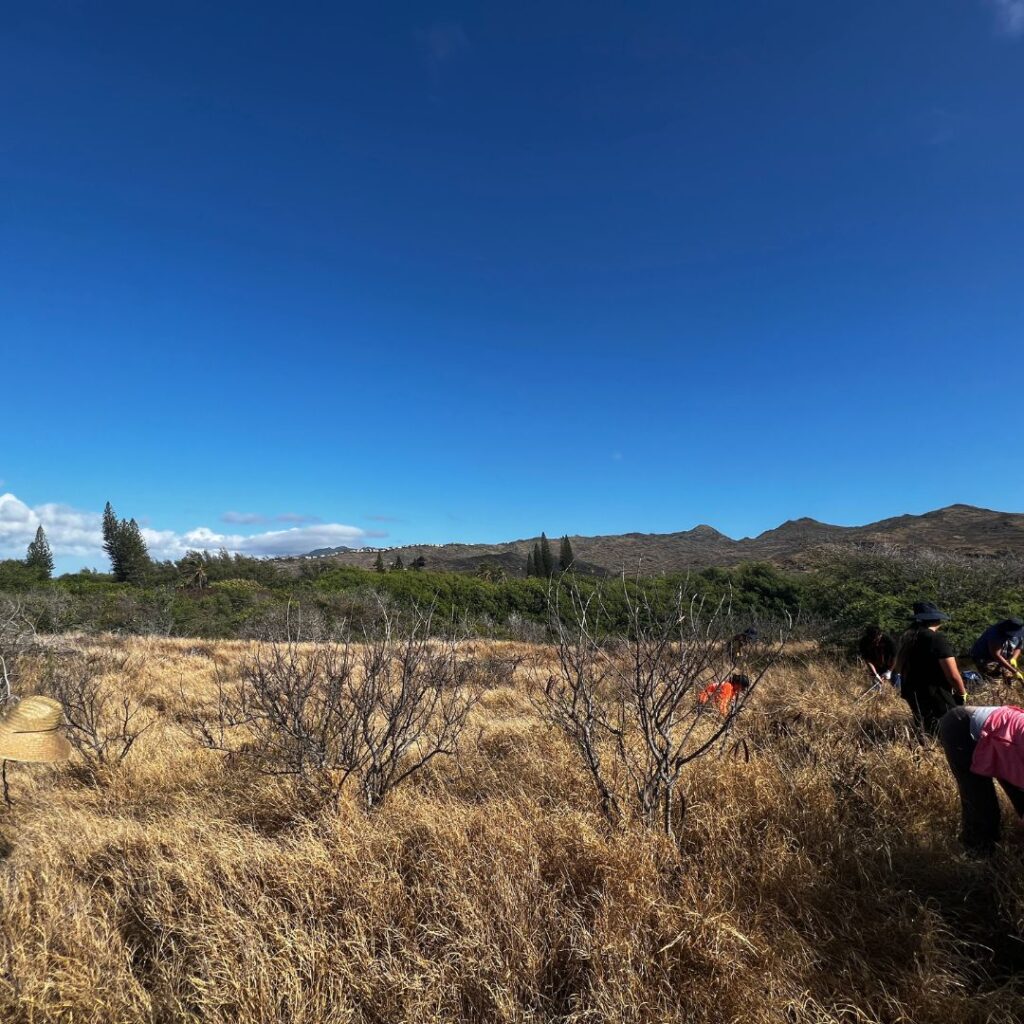
And this is what it looks like now.

You may have noticed some small trees in the ‘before’ image, those are Koa Haole trees which are invasive. Removal of these trees is a group effort and requires trimming them down and then pulling out the stump. If you would rather do something more simple, you can always help to remove the grass that covers almost the entire property.
Once we finished clearing out this area, we planted some native ground cover plants that would help to make this area suitable for larger native trees and shrubs.

After our work was finished we took a trip to see some native bees, which I will cover later, and we were also brought to the very end of the Kaloko Inlet and took some time to be educated about some of the Native Hawaiian legends about places that were near to us.
Unique Aspects Of This Volunteer Program
If you’ve spent time hiking or just being outside in general on Oahu, then you know that we have bees; however, the yellow honey-making bees that you see around the island are European and we actually have our own species of Native Yellow-Faced Bees.
While volunteering at Kaloko Inlet, I got the chance to see our native bees up close and I can confirm that they look just like beach flies but photographs show that they have unique yellow patterns on their faces that distinguish them from any other beach insect. They also act as the main pollinators for coastal native plants.
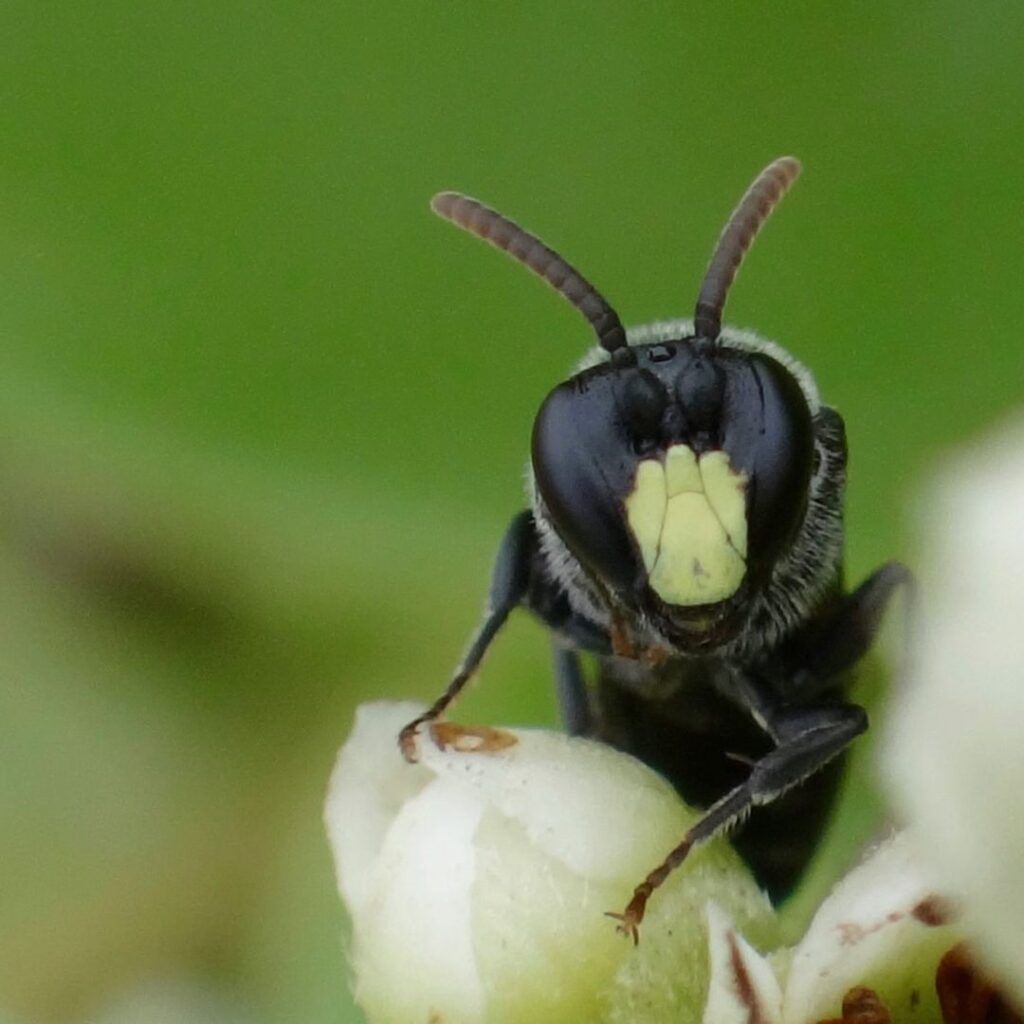
Something else that makes this volunteer opportunity so unique is that you get to see places that rarely ever get seen; for example, I have gone past Kaloko Beach countless times without knowing that it even existed or that there was a site that helped to restore native plants nearby.
Final Thoughts
808 Cleanups has once again provided a solid and enjoyable volunteering opportunity for people of all ages. Whether you decide to do the Kaloko Inlet or the Kaupo Hillside volunteering, you can rest assured that you’re making a good choice and will not only enjoy yourself but walk away knowing something that you didn’t before.

